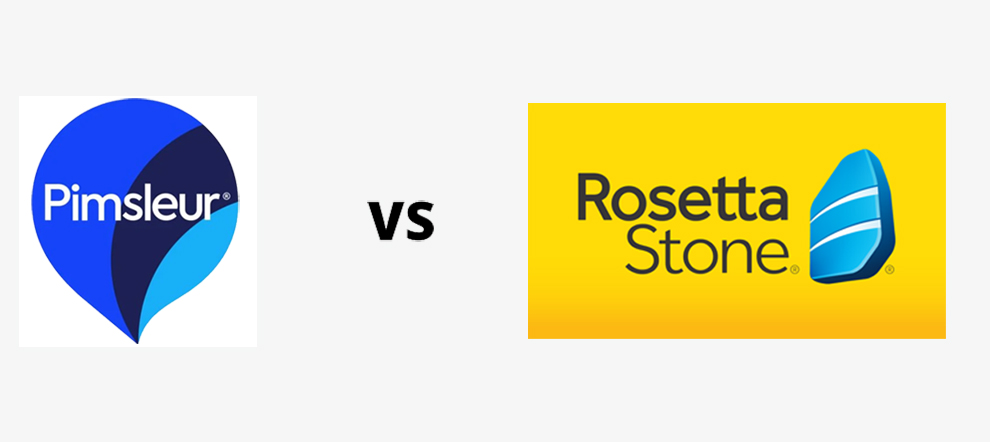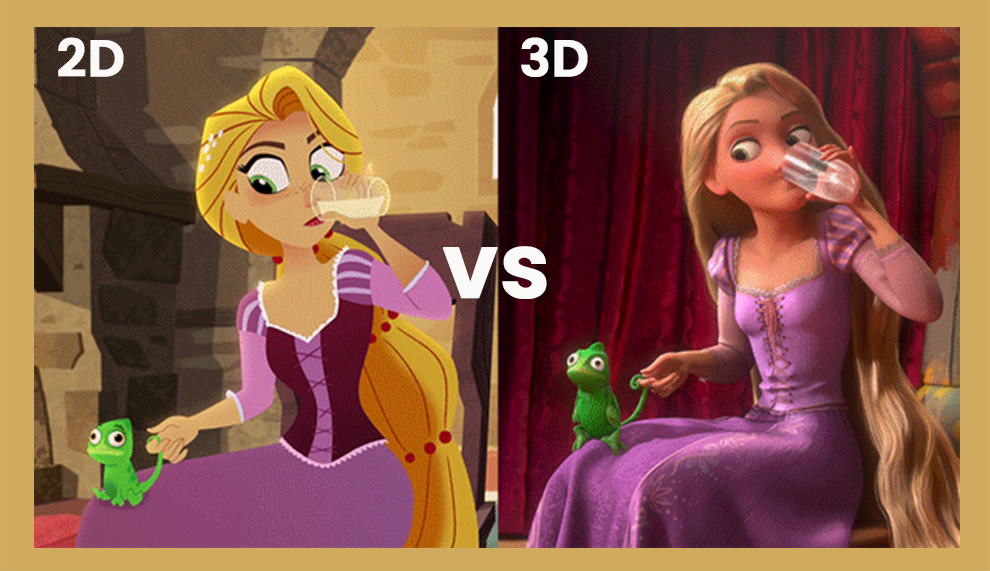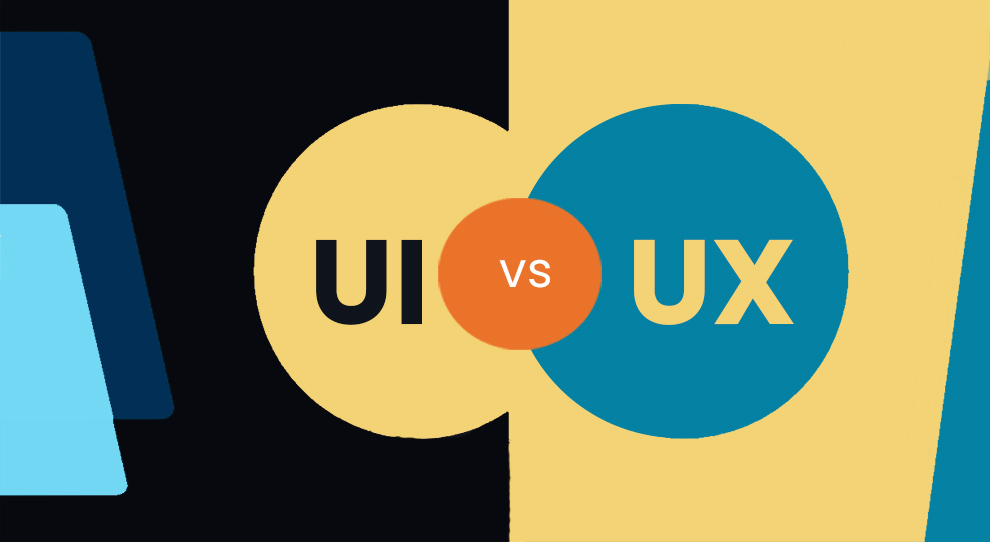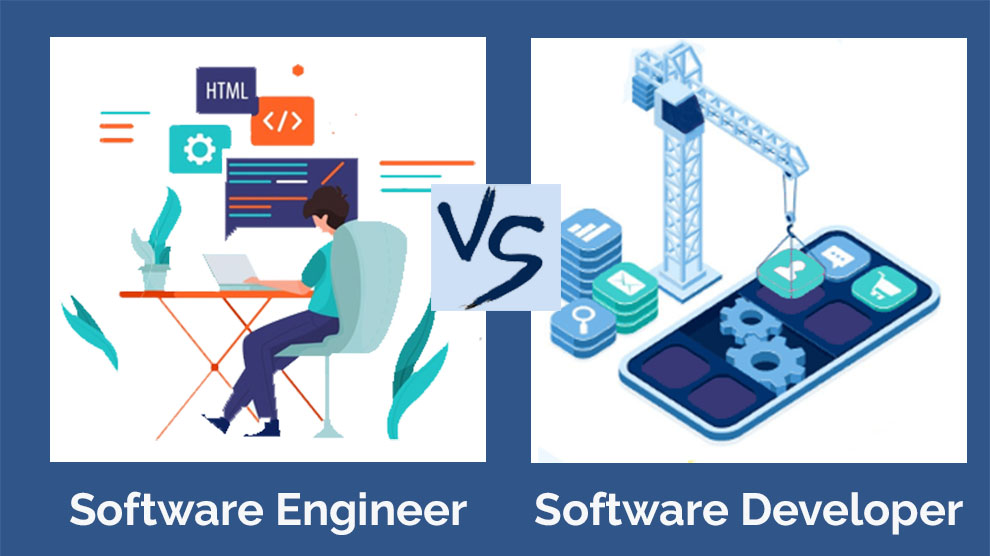If you’re a learner who easily loses interest in learning something new, then go for interactive lessons offered by Rosetta Stone. They’ll keep you hooked as compared to the audio lessons by Pimsleur.
Pimsleur focuses mainly on audio lessons, while Rosetta Stone stresses visual learning via interactive lessons, writing, audio, and pictures. Moreover, Pimsleur educates you via listening and repeating, primarily the method children follow to learn a language.
That is the fundamental difference between Pimsleur vs Rosetta Stone – what else, let’s find out!
Rosetta Stone and Pimsleur are another of the two popular platforms to learn foreign languages. They offer courses to learn different languages by taking lessons of varying lengths.
Though they may look similar on the surface, there are a few differences between them, mainly in their delivery methods and course styles, making one better than the other.
So, which is better, Rosetta Stone or Pimsleur? The choice primarily depends on the kind of learner you are.
If you are a visual learner, Rosetta should be your go-to option, but Pimsleur can be the platform for a person who doesn’t need too many interactive classes and just wants to listen to lessons and learn.
This is one introductory way to differentiate the two, and you must understand their pros and cons and individual attributes to decide which one you would choose.
So, let us take you through a detailed review of these two language learning platforms.
Pimsleur versus Rosetta Stone – Features Compared
| Attribute | Pimsleur | Rosetta Stone |
| Price | 20 USD per month | 12 USD per month |
| Languages | >50 | >20 |
| Lesson Duration | 45 to 60 minutes | 45 to 60 minutes |
| Grammar Lessons | Thorough coverage | Very minimal |
| Speaking Skill Practice | More effective | Relatively less effective |
| Level | Beginner to Intermediate | Beginner to Intermediate |
| Interactive learning | Less | More |
| Visit Pimsleur | Visit Rosetta Stone |
Rosetta Stone – How Does Rosetta Stone Teach?
Hint: It is best-suited for audio-visual learners.
In Rosetta Stone, the teaching style primarily focuses on audio and pictures. So, for maximum length, you will see a collection of images with one or more sentences or words spoken by the native speaker in the chosen language.
This method of learning a language is called ‘Dynamic Immersion’. It is designed to equip you to associate the words with a picture and understand their meaning, just like you would have if it were your native language. It is an incredibly effective and straightforward method.
Moreover, their lessons are in the languages you hope to learn. It motivates you to quickly comprehend the spoken and written side of the language.
The educators employ different tasks and activities in every lesson, like writing and speaking exercises for correct word pronunciation and spelling, and even recreating their natural pacing for a real-life conversation in your target language.
The class duration varies for every language and mainly depends on how quickly you progress. But, no one level takes >40 to 50 hours to complete. A single session will usually be 5-30 minutes long.
They have live, paid tutoring sessions presented by experienced professionals. You will study in a small group and listen as well as speak solely in the language you aspire to learn. It helps you become confident in the language.
Between Pimsleur vs Rosetta Stone, the only low to Rosetta Stone’s teaching method is that some tutoring session slots may be inconvenient for a few time zones. Hence, you may be unable to find the schedule you seek.
Is Rosetta Stone A Good Deal?
| Pros | Cons |
|
|
Can you become fluent using Rosetta Stone?
Even though Rosetta Stone can help you build a foundation, it does not make you fluent. So, when you feel you have maxed out on your learning with Rosetta Stone, you will have to push yourself into situations where you actively use this language.
What age is Rosetta Stone appropriate for?
Rosetta Stone is the perfect language learning platform for students five and older. Some sections of the Rosetta Stone can be for younger students, but most require you to know how to read.
Visit Rosetta Stone
What Are Pimsleur Lessons Like?
Hint: You learn the conversational language better with Pimsleur.
Pimsleur follows an audio-based approach. They employ the phrases or words in the language you wish to learn and repeat them in your native language for you to translate into the language you are learning.
Every class has ten half-hour lessons or thirty half-hour lessons. A few languages like Hungarian are available in shorter duration.
Since the system is audio-based, very little class involves writing or reading. Some of their language learning classes comprise reading material, but it is for you to view while you hear the audio.
This teaching works better at encouraging the students to understand the spoken language via audio, which is beneficial to help you learn the correct pronunciation.
So, is Pimsleur better than Rosetta Stone? Of course, but if you understand via visual methods, Pimsleur may not be cut.
Is Buying Pimsleur Worth It?
| Pros | Cons |
|
|
Can you become fluent with Pimsleur?
Pimsleur does not make you fluent like a native speaker, but it will give you enough practical understanding of the language and help you gracefully use it socially.
What language level will Pimsleur get you to?
Pimsleur covers all levels from 1 to 5. So, you can start this program from zero, learn some initial vocabulary and survival phrases, and then gradually progress to an intermediate level of understanding and speaking.
Pimsleur Vs Rosetta Stone – Which Is More Efficient and Better?
A. Pricing – Which is cheaper Pimsleur or Rosetta Stone?
Rosetta Stone is more affordable.
Pimsleur charges 19 USD per month for its premium subscription model. They have a seven-day free trial but only beneficial for testing the app to assess if you like it. However, in the free trial, you get only one 30-minute lesson.
You can run their subscription plan across different devices. You can also share your account with three household members. Hence, it is a good pick for the family.
In their standard plan, you get driving mode that you can enjoy as you drive for work. They also have various quiz games and vocabulary reviews. You can also find lesson packages for each of their languages at different price points as CDs and MP3s.
These are mainly audio classes. Hence, they are not as beneficial if you wish to learn to write or read languages but do a good job at bettering your spoken language.
Pricing usually is around $120 for their 30-lesson pack. However, their 150-class pack will cost $550. Pricing varies between languages, depending on the number of lessons and their complexity. CDs can be expensive.
On the contrary, Rosetta has multiple pricing methods. The cost depends on how long your subscription tier is. You can get their shortest, three-month pack for 11.99 per month, amounting to $35.97.
They have a one-year subscription plan costing $7.99 per month, which costs $95.88. It may be expensive, but has a whole year of access. Once you pay this amount, you can access all of Rosetta Stone’s languages.
Their lifetime subscription plan costs $179 and bags you permanent access to their subscription. They also have a Lifetime Plus Plan with a year of unlimited group coaching with an instructor. It costs $299.
Whether you look at the annual or monthly costs, Rosetta Stone is cheaper than Pimsleur. Even though Rosetta has a lifetime subscription, you do not get any such option with Pimsleur. But Pimsleur’s downloads are also primarily lifetime subscriptions. However, these are curtailed to one language only.
B. Ease of use and effectiveness – between Pimsleur and Rosetta Stone who wins?
Both are very easy to use
Their website and the app version have a modern dashboard and are easy to navigate on the app and desktop. Rosetta Stone also lets you use them at two platforms in a go.
C. English Translation – is Pimsleur or Rosetta Stone better?
Pimsleur lessons have an abundant English translation to streamline learning.
In Pimsleur lessons, you will find an English-speaking moderate that helps you understand what is happening at every step. It is necessary to ensure that lessons move at their pace sans causing any frustration.
On the contrary, Rosetta Stone adheres to 100 percent immersion. So, they have almost zero English translations.
Using English for translations and directions can be helpful because it can be frustrating if you get lost in Rosetta Stone with zero English translation. Sometimes a quick translation can help you understand better. Thus, small amounts of English use work better for us.
D. Languages – Pimsleur vs Rosetta Stone?
Pimsleur covers more languages than Rosetta Stone.
Broadly both these companies provide courses in different languages. But Pimsleur has around fifty languages, whereas Rosetta teaches only twenty-five languages. So, Pimsleur has greater variety.
E. Voice Recognition
Voice Recognition technology is one of the strongest suits of Rosetta Stone.
Rosetta Stone employs their proprietary TruAccent Voice Recognition technology. So, you will have to fill in the blanks, repeat phrases, and describe what is happening in the different images you see across the lessons.
Their voice recognition tool listens to everything you say, and if you say it right, it will confirm it with a green indicator, but if you mispronounce it, it will prompt you to repeat it till you get it right.
Of course, it is not a flawless system and certainly not a substitute for a real human being, but it is mostly accurate.
Pimsleur also has a Voice Coach feature, which is relatively new but not as good as Rosetta. However, Pimsleur is taking continuous steps to better it. But, their proficient language speakers or moderators repeat phrases and words several times. Thus, you can get a hang of it and avoid mispronunciation.
F. Learning levels – Pimsleur versus Rosetta Stone
Rosetta Stone has more levels, even for less popular languages.
Broadly, the Pimsleur class is divided into different levels. The lower levels are for beginners, while the higher levels are for advanced learners. Since every session in Pimsleur has thirty lectures, and every lesson is thirty minutes long, you will dedicate fifteen hours for every level.
As a beginner in any language, it always helps to start with the initial levels and then move forward. The levels may vary amongst languages, but the popular ones, like Spanish, have around four to five, whereas the less popular ones will have a level or two.
On the contrary, Rosetta Stone divides its learning courses into three to five levels. Like Pimsleur, the levels graduate from beginner to advance levels.
Every lesson is 5-30 minutes long, depending on the exercises covered. For us, this approach is better than fixed lesson length as it makes the process more engaging. Typically, it will take around 40-50 minutes to complete every level.
G. Which has more Interactive classes Pimsleur or Rosetta Stone?
Rosetta Stone has more interactive and engaging lessons.
Pimsleur’s learning approach can be somewhat bland because the software is audio-based. It implies that there is not enough variety in the program’s lesson content and teaching style.
Typically, you will listen to phrases and words in the mother tongue and target language and repeat. It applies to all their lessons. It might feel monotonous over time and reduce its effectiveness. So, Pimsleur loses its ability to keep the users engaged.
Rosetta Stone has audio-video lessons split into various activities like reading and writing. It gives variety to the structure and content, so you will not work on the same task. They have to guess and bingo games induced into their lessons and many multiplayer games, which make the lessons lively.
H. Customer support
Rosetta Stone’s live chat feature makes it a winner.
Pimsleur support representatives are available 24/7 via call, which can be beneficial if you seek an instant response. You can also contact them via email through their Contact Us page.
But, there is no way to ascertain how long is the response time. Similarly, you can reach Rosetta Stone’s support representatives via email and phone. But they are not available 24/7.
American customers with Homeschool or Personal account can contact the support team from Monday-Friday between 9 AM and 10 PM.
On weekends you can reach them from 11 AM to 8 PM. For Spanish support, you can contact them Monday-Friday between 10 AM and 11 PM. The weekend timings are the same.
You can email them by filling out the form on the Support page. They promise a prompt reply, but again no timeline is specified.
Rosetta Stone also has live chat support wherein you can receive a response in less than three minutes and communicate with a real agent 24/7.
Even though Pimsleur offers 24/7 phone access, the live chat support by Rosetta Stone makes them stand out because the response time is less than three minutes and is more convenient and quicker than phone or email.
Related: Pimsleur vs. Babbel | Busuu vs. Babbel | Babbel vs. Duolingo| Memrise Vs Duolingo| Rosetta Stone Vs Babbel| Duolingo vs Rosetta Stone| Rocket Languages vs Rosetta Stone| Rocket Languages vs Pimsleur
Pimsleur Vs Rosetta Stone – What To Choose When?
- If you like a slower approach to learning a language – Pimsleur.
- If you seek private tutoring for the tricky bits – Rosetta Stone
- If you are ok with audio alone – Pimsleur
- If you like to enjoy learning on the go, say when driving a car – Pimsleur
- If you get bored when hearing too much audio – Rosetta Stone
- If you are into audio-video learning – Rosetta Stone
- If simple scheduling is crucial for you – Pimsleur (you can take one lesson per day)
- If you want to do one quick class, whenever you have time – Rosetta Stone
Pimsleur versus Rosetta Stone – Which Is Better?
After testing the two platforms, we have to say that Rosetta Stone is better than Pimsleur. It is more affordable as well.
If you are a visual learner, you will find Rosetta Stone better because Pimsleur primarily focuses on audio.





